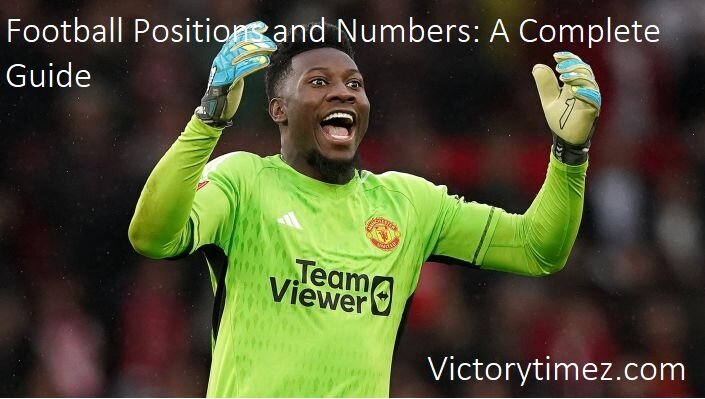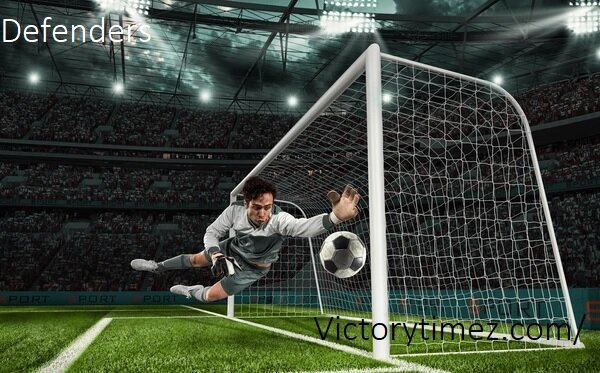
Football, known as soccer in some parts of the world, is a game rich in tradition and strategy. Central to the understanding of football is knowing the various positions on the field and their corresponding numbers. Each position has a unique role and importance, and understanding these roles can enhance your appreciation of the game. This guide will take you through the primary football positions and their typical numbers, helping you decode the complex world of football formations and tactics.
1. Goalkeeper (1)
Role:
The goalkeeper is the last line of defense and the only player allowed to use their hands within the penalty area. Their primary role is to prevent the opposing team from scoring by saving shots on goal.
- Responsibilities:
- Positioning and shot-stopping
- Organizing the defense during set pieces
- Distributing the ball to teammates
2. Defenders

Center-Backs (2 and 5)
Role:
Center-backs, also known as central defenders, play a crucial role in blocking and intercepting attacks. They typically work in pairs and are positioned centrally in the defense.
- Responsibilities:
- Marking the opposing forwards
- Clearing the ball from the defensive area
- Supporting the goalkeeper
Full-Backs (3 and 4)
Role:
Full-backs are positioned on either side of the center-backs. They provide defensive support and often contribute to attacking plays down the flanks.
Responsibilities:
- Marking wingers and wide attackers
- Overlapping with midfielders to create attacking opportunities
- Crossing the ball into the opponent’s penalty area
- Wing-Backs (Ranging from 2 to 11)
Role:
Wing-backs are a more advanced version of full-backs, positioned wider and higher up the field. They are used in formations that employ three central defenders.
- Responsibilities:
- Providing width to the team’s attack
- Delivering crosses into the opponent’s box
- Tracking back to defend
3. Midfielders
Central Midfielders (6 and 8)
Role:
Central midfielders are the engine of the team, controlling the pace of the game and linking defense with attack.
Responsibilities:
- Distributing the ball and controlling the tempo
- Breaking up opposition attacks
- Supporting both defensive and offensive plays
- Attacking Midfielders (10)
Role:
Attacking midfielders are positioned closer to the forwards and are tasked with creating goal-scoring opportunities.
Responsibilities:
- Providing through balls and key passes
- Taking on defenders and creating chances
- Supporting the forwards in scoring
- Defensive Midfielders (6)
Role:
Defensive midfielders, or holding midfielders, are positioned deeper and are focused on protecting the defense.
- Responsibilities:
- Breaking up opposition play
- Shielding the defense
- Distributing the ball to more attacking players
4. Forwards
Wingers (7 and 11)
Role:
Wingers play on the flanks and are crucial for stretching the opposition’s defense.
· Responsibilities:
- Delivering crosses into the penalty area
- Taking on defenders and creating space
- Cutting inside to take shots on goal
Strikers (9)
Role:
Strikers are the primary goal-scorers for a team. They are positioned centrally and are expected to convert chances into goals.
Responsibilities:
- Finishing goal-scoring opportunities
- Making runs to create space
- Linking up play with midfielders
5. Formation Examples
4-4-2
Description:
A classic formation with four defenders, four midfielders, and two forwards.
- Key Characteristics:
- Balanced approach with solid defense and midfield support
- Two strikers provide a direct goal threat
4-3-3
Description:
A formation with four defenders, three midfielders, and three forwards.
- Key Characteristics:
- Emphasizes wide play with wingers and a central striker
- Midfield trio supports both defensive and attacking roles
3-5-2
Description:
A formation featuring three central defenders, five midfielders, and two forwards.
- Key Characteristics:
- Wing-backs provide width and support in both defense and attack
- Midfielders control the game and link up with the forwards
Conclusion
Understanding football positions and their corresponding numbers provides a foundational knowledge that enhances your appreciation of the game. Each position, from the goalkeeper to the forwards, has a specific role that contributes to the team’s overall strategy. By familiarizing yourself with these roles and how they fit into various formations, you can better understand the tactical nuances of football and enjoy the game at a deeper level.